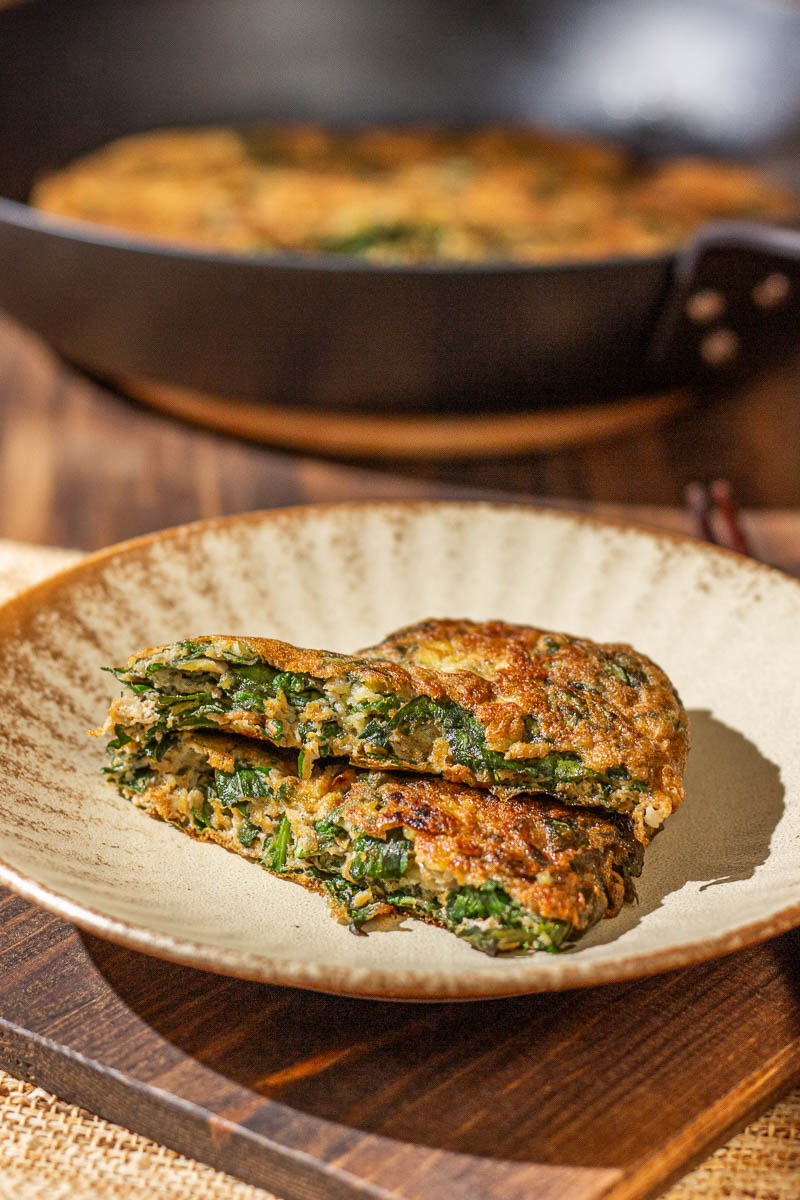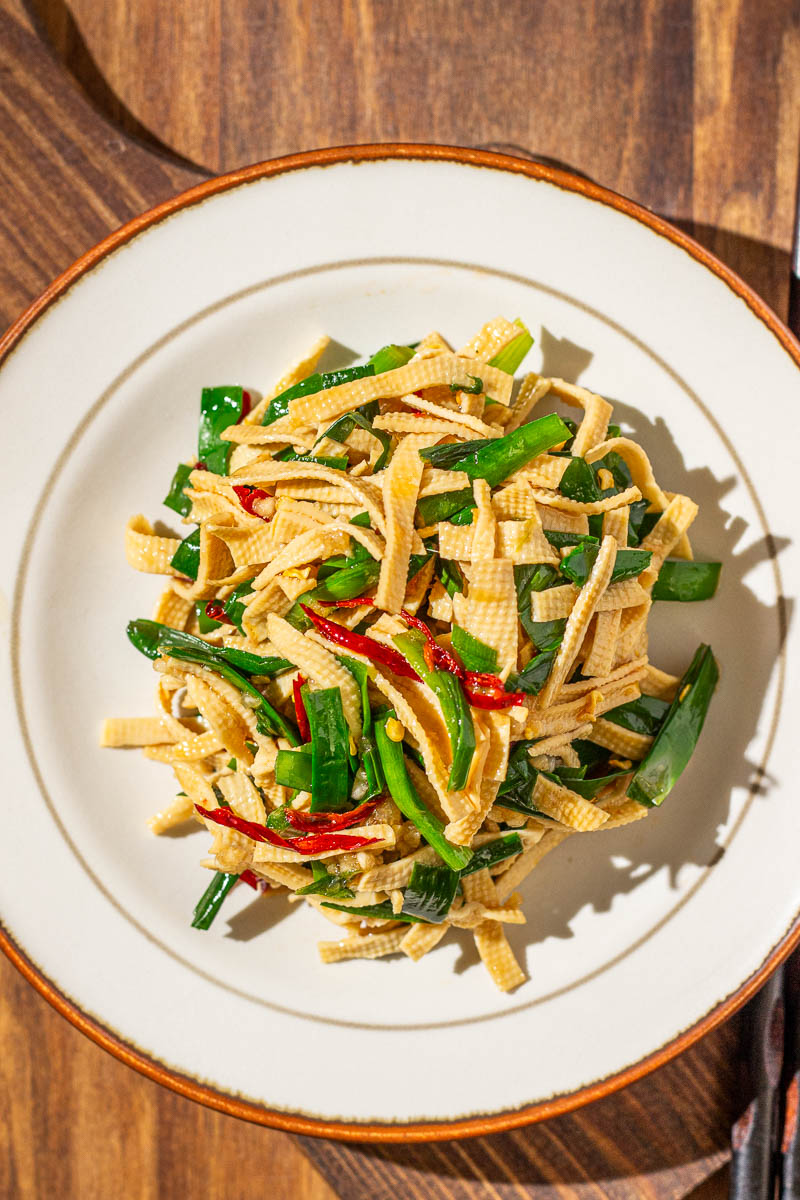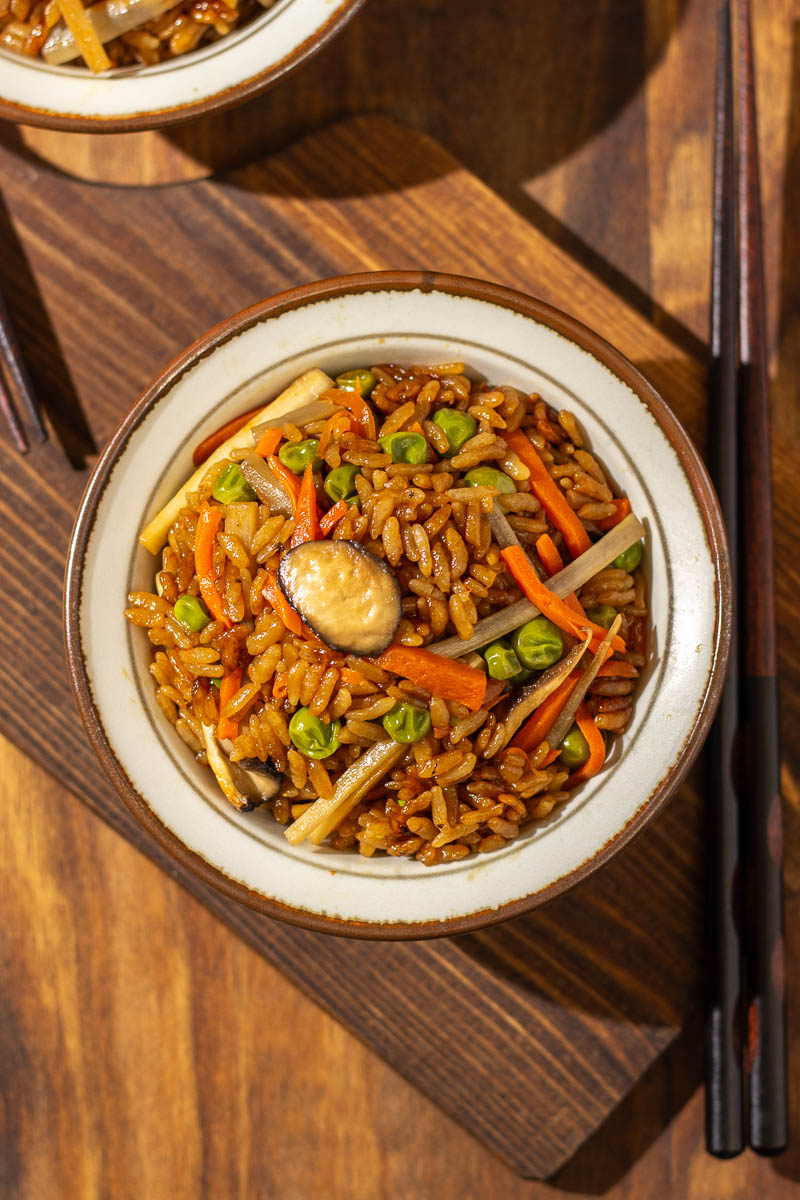Easy Cold Sesame Noodles with Shredded Mushrooms (杏鮑菇涼麵)
Cold, creamy, crunchy, chewy. This Cold Sesame Noodles with Shredded Mushrooms are your new summer obsession (bonus: they’re easy & meatless!).

Would You Like To Save This?
A cold noodle dish perfect for hot days!
In Taiwan, cold noodle stalls selling sesame noodles are usually located inside a wet market or near one. Such a stall exists near where I grew up in Taipei (still there!), and just a few blocks away from our neighborhood wet market.
With the abundance of vegetable toppings, it’s really a Chinese noodle salad. In addition to eggs, ham strips and/or shredded chicken are usually the protein of this dish. To make this dish vegetarian, we’ll be using shredded king oyster mushrooms (skip the eggs to make it vegan)!
King Oyster Mushrooms in Chinese
King Oyster Mushrooms are called Xìng Bāo Gū (杏鮑菇) in Mandarin Chinese.
Ingredients Notes And Substitutions
A complete list of ingredients will be on the recipe card below.

The Sauce
- Peanut Butter: While the dish is mostly referred to as cold sesame noodles, there is actually more peanut butter in the sauce (it should really be called cold peanut sesame noodles, but that’s a mouthful 🥴). Peanut butter balances the slightly bitter sesame flavor that lingers at the back of your tongue.
- Tahini or Chinese Sesame Paste: As long as sesame is the only ingredient, tahini from a non-Asian market and Chinese sesame paste should be interchangeable, and the difference becomes barely noticeable in a sauce with other strong flavors (like this one!).
- The optimal ratio for the base of the creamy sauce is 20% sesame paste or tahini and 80% peanut butter, which is why the sauce is often referred to as the Two Eight Sauce (Èr Bā Jiàng, 二八醬). Literally, the 80/20 rule in cooking!
- Water: A few tablespoons of water are needed to thin out the peanut-sesame sauce. I’ve tried both hot and room temperature water, and both worked just fine.
- Soy Sauce: I am using regular Japanese soy sauce. You can also use light soy sauce (I would not recommend dark soy sauce, as it’s too strong and would take away from other flavors 🌚).
- Rice Vinegar: Personally, I prefer the taste of white rice vinegar in my cold sesame noodles, but you can also use Chinese black vinegar.
- Sugar: A must! Just a small amount elevates the entire flavor profile.
- Garlic: This is also a must! If you can only do cooked garlic, you can slowly bake or air fry the garlic while preparing the other parts of this recipe. Alternatively, you can use a chili garlic sauce (since most people like to add chili oil to their noodles).
- Sesame Oil: This really adds to the overall aroma of the dish! You can either add sesame oil to the sauce or to the cooked noodles; I have done both and didn’t notice a huge difference.

The Toppings
- King Oyster Mushrooms: We’ll be using shredded king oyster mushrooms to mimic shredded chicken. They might be lower in protein, but definitely not in taste!
- Carrot & Cucumber: They are a must in Taiwanese-style cold sesame noodles! You would also see bean sprouts sometimes, but I didn’t use them in this recipe. Feel free to add them to enhance the textural contrast!
- Eggs: Also a must in Taiwanese-style cold sesame noodles! I have mostly seen them in noodle form, but you would also see them in hard or soft-boiled forms. You can skip them and make the noodles vegan.
Chicken of the Woods? Not only can king oyster mushrooms be shredded and used as faux shredded chicken, but their meaty texture also makes them a great substitution in place of chicken in Vegetarian Three Cup Chicken using King Oyster Mushrooms.
The Noodles
- Noodles: Traditionally, the kind of noodles used in Taiwanese cold sesame noodles is Yóu Miàn (油麵) or “Oil Noodles”. They are usually pre-cooked, mixed with some oil to prevent the noodles from sticking to each other, then packaged for sale in the refrigerated aisle. They are alkaline noodles made with edible alkaline. Alkaline is added to make the noodle texture more al dente and chewy (similar to ramen noodles), which turns the noodles yellow. Noodle manufacturers sometimes add food coloring to achieve the same appearance. So, make sure to read the ingredient list! 👀
- Substitution: I have never been a huge fan of alkaline noodles, so I often opt for thin wheat noodles or wonton/egg noodles (thin wheat noodles made with eggs). If you do not consume gluten, close substitutes similar in texture are vermicelli rice noodles or 100% buckwheat soba noodles. If you don’t have any Chinese/Asian noodles, thin Italian pasta like angel hair is a close substitute.
How To Make This Recipe: A Quick Visual Guide
Here is a quick recipe run down with some visual instructions! The full instructions with ingredients and measurements are in the recipe card below.
Sauce Preparation
Prepare the sauce base by using a 1:4 ratio of tahini (or Chinese sesame paste) and peanut butter. Then, add water and other condiments.


Add minced or crushed garlic, and mix it with the sauce.


Toppings & Noodles Preparation
Prepare the king oyster mushrooms by shredding the mushrooms, and either baking them in the oven at 425°F for 20-25 minutes or air frying at 385°F for 8-10 minutes.
Baking seemed to yield a more even result, but it takes longer.


Air frying was quicker, but some pieces seemed way more cooked than others.


Baking vs. Air Frying

Prepare the carrots and cucumber by julienning them.


Prepare the egg by making an egg pancake and slicing it into noodle-like ribbons.


Boil a pot of water to blanch the carrots and cook the noodles.


Assemble
Prepare the noodles by adding sesame oil to prevent them from sticking. Then, layer on all the toppings. Finally, add the sauce, mix well, and enjoy!




Easy Cold Sesame Noodles with Shredded Mushrooms
Ingredients
For the Noodles
- 1 cluster noodles dried or fresh
- 1 teaspoon sesame oil to prevent the noodles from clumping and to enhance the flavor
For the Toppings
- 1 piece king oyster mushrooms shredded
- ⅛ teaspoon salt for flavoring the shredded mushrooms; optional
- ⅛ piece carrot julienned
- ⅛ piece cucumber julienned
- ½ egg cooked and made into egg noodles
- 1 teaspoon cooking oil for cooking the egg
- toasted sesame seeds for garnish
For the Sauce
- 1 teaspoon Chinese sesame paste or tahini
- 4 teaspoons peanut butter I am using salted peanut butter; adjust your sauce as needed if you are using unsalted
- 2 tablespoons water
- 1 tablespoon soy sauce
- ½ tablespoon rice vinegar
- ¼ teaspoon sugar
- 1 clove garlic minced or crushed
Equipment
- 1 oven or air fryer for baking the shredded mushrooms
- 1 frying pan for making the egg noodles
- 1 soup pot for blanching the carrots and cooking the noodles
- 1 spider strainer or fine mesh skimmer for taking out blanched carrots and cooked noodles
Instructions
Before You Start
- If you are using an oven, preheat the oven to 425℉ (or about 218℃).
For Preparing the Toppings
- Use 1-2 forks to shred 1 piece king oyster mushrooms. I like to cut the mushroom in half, place each half on its flat side on the cutting board, use either a fork or one of my hands to stabilize the mushroom, then use another fork to shred it.

- I would then use my hand to tear the mushroom apart, and further shred it with a fork. You don't have to shred them very finely, as they will shrink during baking or air frying.

- Shredded mushrooms will look very similar to cooked and shredded chicken. In a large bowl, add the shredded mushrooms, ⅛ teaspoon salt, and mix well; this step is optional.

- Spread the shredded mushrooms evenly on the baking sheet or inside the air fryer tray.

- If you are using an oven, bake the mushrooms at 425℉ (or about 218℃) for about 20-25 minutes. If you are using an air fryer (I did not preheat), air fry the mushrooms at 385℉ (or about 196℃) for 8-10 minutes.

- Baking = slower but more consistent.

- Air frying = quick but less even.

- Overall, I prefer air frying over baking as it is faster, more flexible (I could just air fry the not-as-cooked pieces for a few more minutes if I want them to be more crispy), and easier to clean up.
- Julienne the ⅛ piece carrot and ⅛ piece cucumber.

- In a small soup pot, add water, bring it to a boil, add the julienned carrots, and blanch for 2-3 minutes. Take them out and set aside for later use.

- In a small bowl, add ½ egg and beat it to make an egg mixture. In a frying pan, add 1 teaspoon cooking oil and heat it over medium heat.When the oil is hot, add the egg mixture and wait until the bottom is cooked. When the bottom is cooked, flip the omelette over, and wait until the other side is also cooked. Remove the omelette from the frying pan and set aside.

- Place the omelette on the cutting board and cut it in half.

- Roll each half up and align them for cutting.

- Slice the omelette into thin strips, like egg noodles.

For Making the Sauce (See Notes for Bulk Making)
- In a small bowl, add 1 teaspoon Chinese sesame paste or tahini, 4 teaspoons peanut butter, 2 tablespoons water, and mix everything with a spoon. I've tried both hot and room temperature water, and both worked just fine.

- Then, add 1 tablespoon soy sauce, ½ tablespoon rice vinegar, and ¼ teaspoon sugar.

- Finally, add 1 clove garlic to the sauce and mix until the sauce obtains a smooth consistency. The sauce should be a thick-runny consistency, just thick enough to coat the noodles and toppings without being too watery and collecting at the bottom of the noodle bowl.

For Assembling the Final Dish
- Bring a large pot of water to a boil, and cook 1 cluster noodles per the package instructions. Add 1 teaspoon sesame oil to the cooked noodles (to prevent clumping and to enhance the overall aroma), and mix well.

- Add the carrots and cucumber to the cooked noodles.

- Then, add the egg noodles and shredded mushrooms.

- Finally, drizzle the sauce you had just prepared and sprinkle some toasted sesame seeds. Mix everything well and enjoy!

For Storage
- You can store the toppings and sauce in separate containers in the refrigerator for up to 3 days. Cook the noodles right before serving.
Would You Like To Save This?
Notes
Nutrition
Nutritional information is calculated to the best of my knowledge using MyFitnessPal (which has a more comprehensive ingredient database that includes Asian food items) and is an estimate. Actual nutrition will vary based on the cooking method and specific ingredients used.







This looks absolutely delicious! I can’t wait to try it!